Complete Guide to Reroof a House: Costs and Steps
Reroofing a house involves planning, choosing materials, and estimating costs. This guide covers the essential steps, from recognizing signs of a roof needing replacement to selecting materials and budgeting. Whether you decide to DIY or hire professionals, learn what you need to know about how to reroof a house.
Key Takeaways
-
Roof replacement is crucial for maintaining the structural integrity and safety of a home, with signs like leaks, sagging, and high energy bills indicating the need for a new roof.
-
Cost factors for reroofing include roof size, pitch, material choices, labor rates, and potential damage, with average replacement costs ranging from $7,000 to $24,000.
-
Choosing the right roofing materials (e.g., asphalt shingles for affordability, metal for durability) and engaging professional contractors is essential for ensuring quality installation and long-term performance.
Understanding Roof Replacement
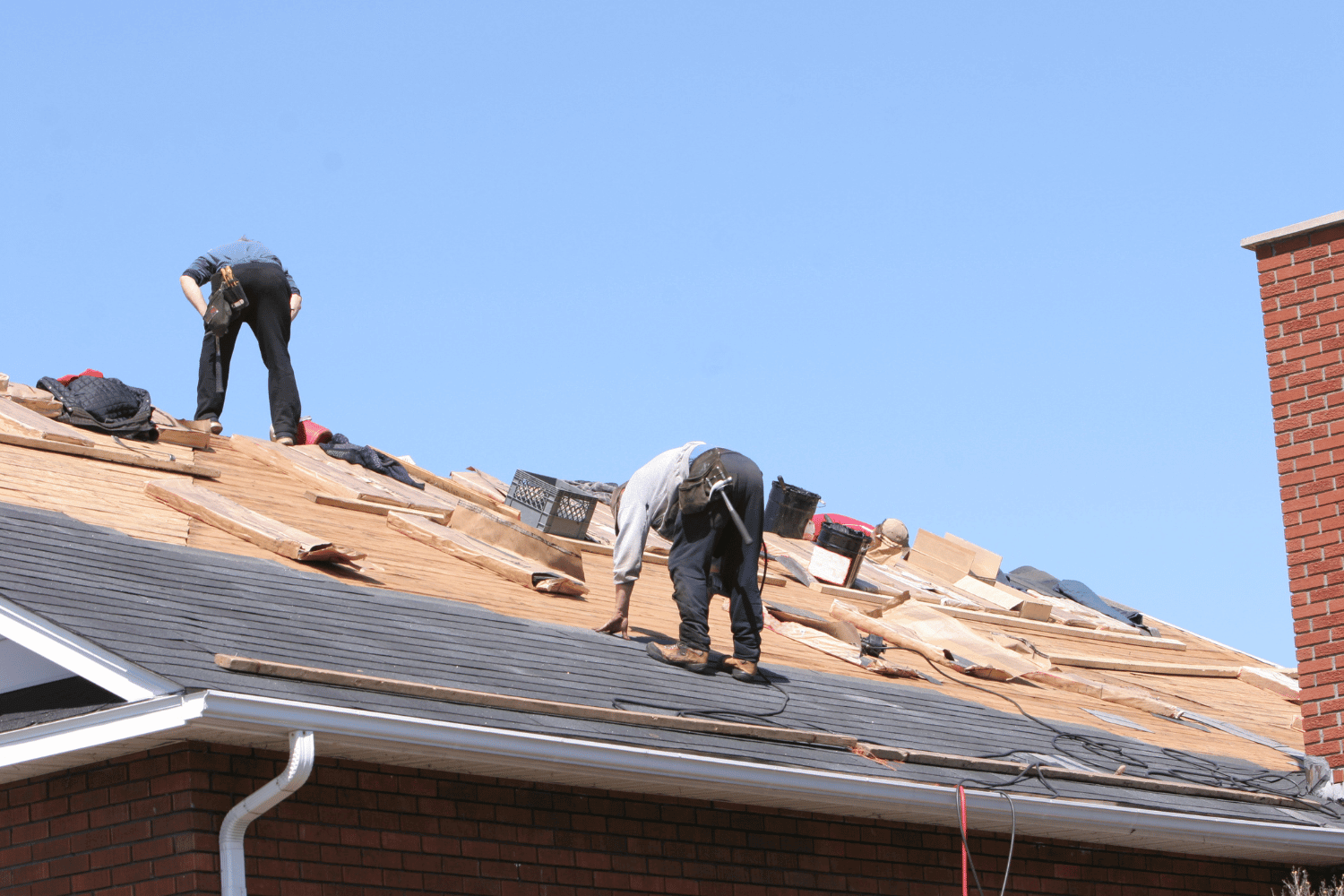
A roof replacement is not just about tearing off old shingles and laying down new ones. It is a critical process that ensures the structural integrity and safety of your home. Roofs protect homes from water damage and other external elements, making their integrity crucial. Over time, roofs can suffer from a variety of issues, including leaks, rot, mold, and pest infestations, all of which necessitate replacement.
Signs that indicate the need for a roof replacement can vary. Water stains on ceilings or walls often point to a leaking roof. Curling or buckling shingles are another red flag, signaling attachment problems and potential damage to the underlying structure. High energy bills might also be a sign that your roof is not adequately sealing your home, allowing heat to escape or enter. In severe cases, a sagging roof is a clear indicator of moisture damage that requires immediate attention.
The long-term benefits of replacing a roof are substantial. A new roof can last for decades, significantly enhancing the curb appeal and value of your home. Moreover, older roofs may not meet current building codes, so replacing them ensures safety and compliance. Regular inspections can help identify systemic issues early, making it more cost-effective to address them with a full replacement rather than piecemeal repairs.
Cost Factors for Reroofing a House

Several factors influence the cost of reroofing a house, making it essential to understand what affects the price. The roof’s surface area is a significant determinant, with larger roofs costing more to replace. Typically, roofs range from 1,000 to 3,000 square foot, and the waste factor usually adds an extra 10-15% to the total square footage to account for overlaps and cuts. The national average cost of roof replacement can vary widely, ranging from $7,000 to $24,000, depending on the size and design of the roof.
The pitch of the roof also plays a crucial role in determining costs. Steeper roofs are more challenging to work on, requiring more labor, safety equipment, and materials, which all contribute to higher costs. Additionally, the type of roofing materials chosen can significantly impact the overall price. While asphalt shingles are generally more affordable and straightforward to install, materials like metal roofs can be more expensive but offer greater durability.
Labor costs are another substantial component, often making up about 60% of the total cost of a reroofing project. The geographical region where you live can also affect roofing costs due to variations in material prices and labor rates. For example, areas with a higher cost of living typically have higher roofing costs. If the existing roof has significant damage, this can further increase the replacement costs.
When planning for a new roof installation, it is essential to consider all these factors to get an accurate estimate. Consulting with a professional roofing contractor can provide a clearer picture of the potential costs involved and help you budget accordingly.
Choosing the Right Roofing Materials
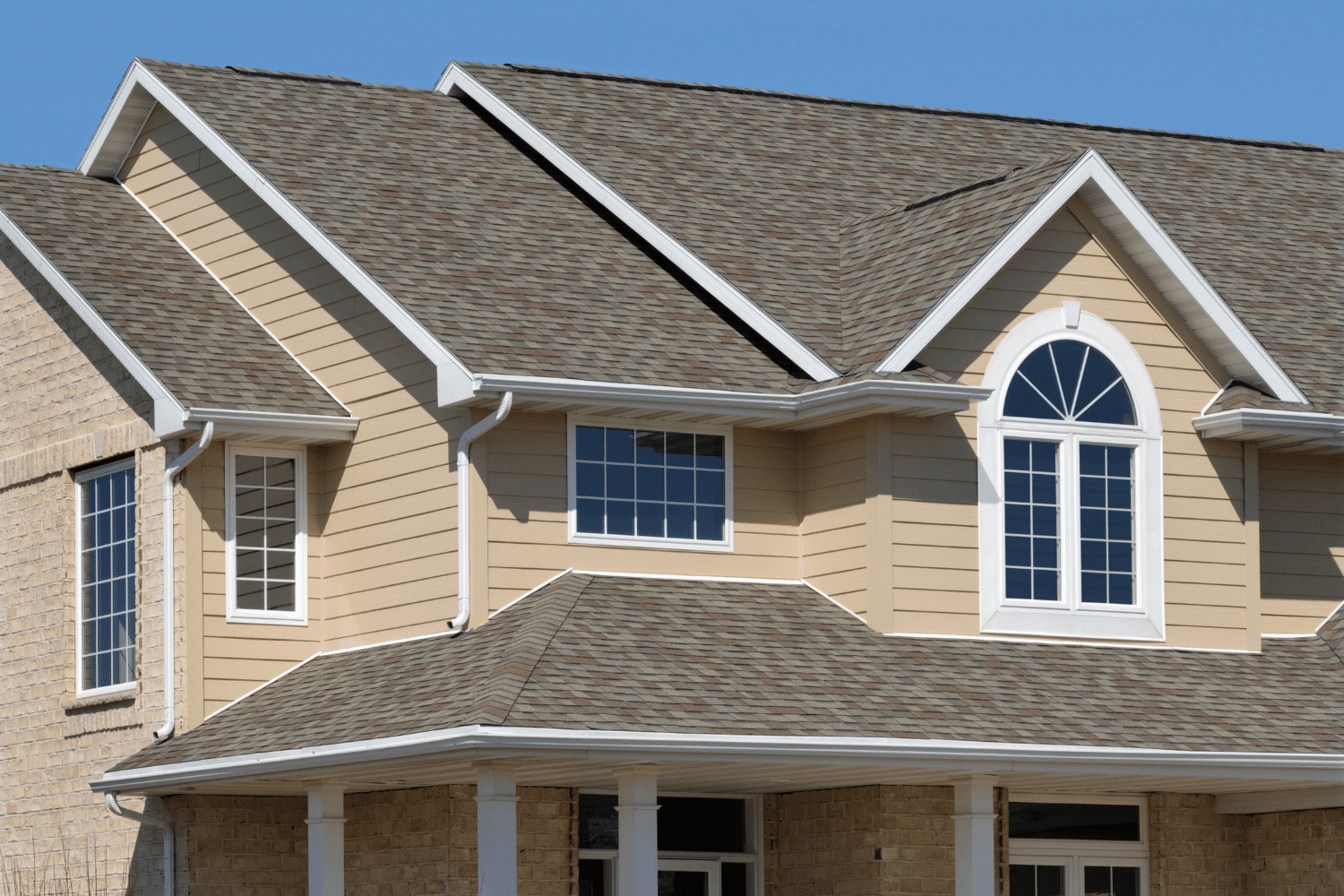
Selecting the right roofing material is crucial for both the longevity and aesthetic appeal of your new roof. Common roofing materials include asphalt shingles, wooden shakes, slate tiles, and various metal options such as steel, aluminum, and copper. Each material has its own set of benefits and drawbacks, making it important to choose one that fits your specific needs and budget.
Asphalt shingles are the most popular choice for homeowners due to their durability, affordability, and variety of styles and colors. They are particularly cost-effective in cold climates and can last between 20 to 25 years. Metal roofs, on the other hand, are an excellent option for hot climates due to their heat resistance and long-lasting nature. Although more expensive initially, metal roofs can offer savings in the long run due to their durability and low maintenance requirements.
When choosing roofing materials, factors such as locality, personal preference, and roof pitch should be considered. For instance, copper roofing is a premium choice with a starting price around $25,000 for a 17 square installation, offering both durability and aesthetic appeal.
On the more affordable end, rolled roofing can be the cheapest option, though it may not offer the same level of durability as other materials. Consulting with a professional roofing contractor can help you weigh the pros and cons of each material and make an informed decision.
Steps to Reroof a House
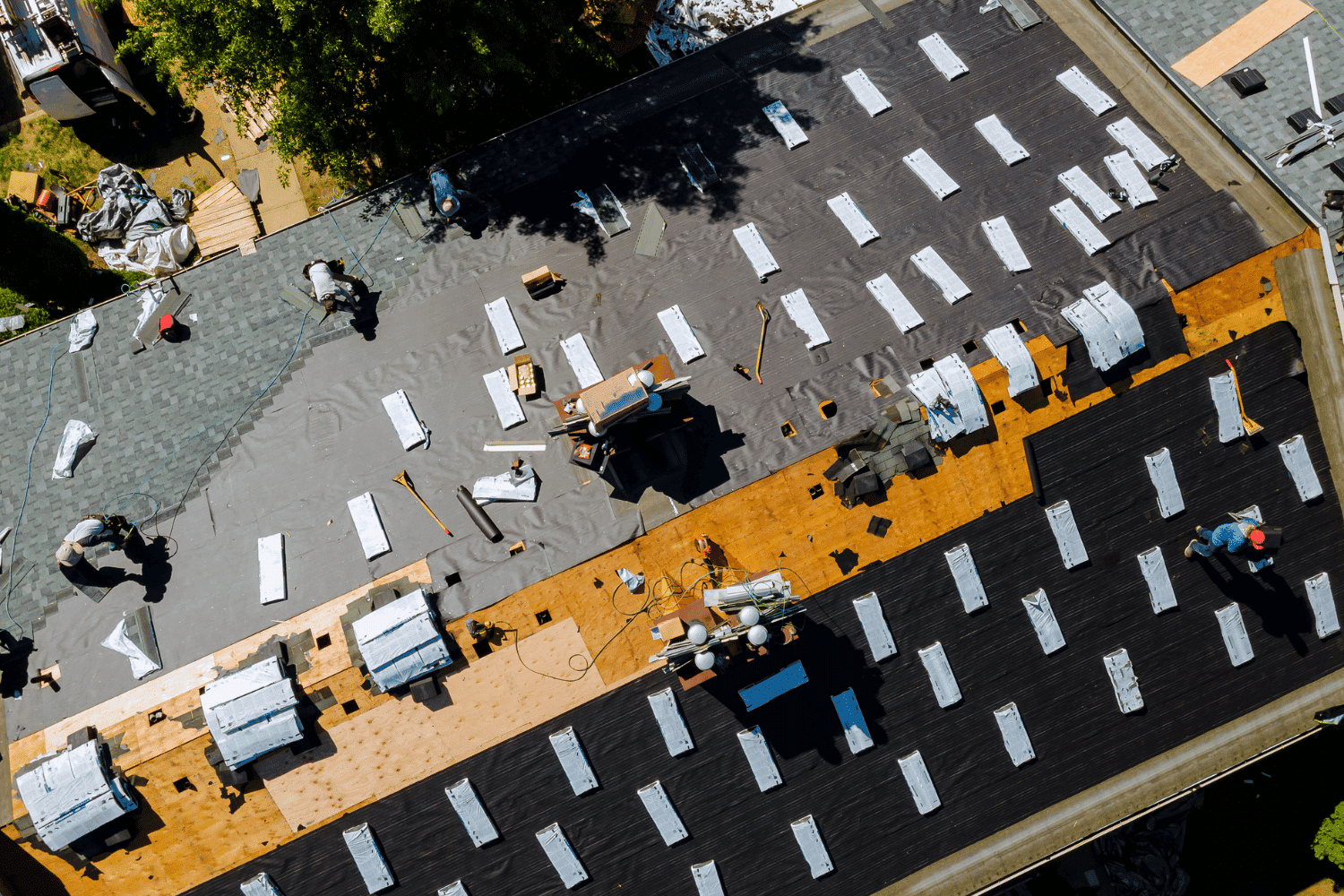
Reroofing a house involves several meticulous steps that must be followed to ensure a successful installation. Each stage, from assessing the existing roof to installing the final shingles, plays a critical role in the overall process.
Understanding these steps can help you appreciate the complexity of the task and the importance of hiring skilled professionals, or if you’re up for the challenge, how to tackle it yourself.
Assessing the Existing Roof
Before starting any reroofing project, a thorough assessment of the existing roof is essential. This evaluation helps determine whether you need a full roof replacement or if some parts can be salvaged. A professional roof inspection can identify issues like watermarks, rot, and other damage that might not be visible to the untrained eye.
In some cases, a partial roof replacement might be sufficient, which can be less costly than replacing the entire roof. However, a full roof replacement ensures that all potential issues are addressed, providing peace of mind and long-term durability. Consulting with professional roofing contractors can help you make an informed decision based on the condition of your roof.
Removing Old Shingles
Removing old shingles is a crucial step in the reroofing process as it prevents future leaks and ensures the longevity of the new shingles. The first step before installing a new roof is to remove the entire old roof, which involves tearing off the old shingles and any underlying materials. For this task, you’ll need materials like caulk, drip edge, flashing, roofing adhesive, nails, underlayment, and new shingles.
To simplify the cleanup process, it’s recommended to rent a dumpster for the disposal of old shingles and other debris. This not only makes the task more manageable but also ensures that the site is clean and ready for the next steps in the reroofing process.
Repairing the Roof Deck
Once the old shingles are removed, the next step is to inspect and repair the roof deck. This involves fixing any damaged areas to provide a stable foundation for the new shingles. During this stage, it’s essential to remove old nails and repair any damaged or rotten sections to ensure the roof deck is solid and secure.
After repairing the roof deck, make sure it is clean and dry before proceeding to the next step. This preparation is crucial as it sets the stage for the successful installation of the underlayment and new shingles, ensuring long-term durability and protection against the elements.
Installing Underlayment and Drip Edge
Installing the underlayment and drip edge is a vital step in the reroofing process. The underlayment acts as a moisture barrier, capturing any water that might seep through the shingles, while the drip edge directs water to the gutters, preventing it from pooling on the roof.
In areas with extreme winters, ice barriers are required to prevent ice dams and water infiltration. Felt paper should overlap by four inches, and both the drip edge and ice barriers should be installed before laying the shingles. This ensures a watertight seal and enhances the overall durability of the roof.
Laying New Shingles
Laying new shingles is the step where your roof starts to take shape. Begin by installing a strip of starter shingles from the edge of the roof, which helps to protect the roof deck and provides a solid base for the subsequent rows of shingles. Using a chalk line to ensure straight lines can make the process more precise and aesthetically pleasing.
Most professional roofers use a pneumatic nailer for installing shingles, which speeds up the process and ensures the shingles are securely fastened. This step requires attention to detail to ensure that each shingle is properly aligned and nailed down, providing a durable and weather-resistant roof.
Installing Flashing and Vents
Flashing and vents are essential components of a roofing system, ensuring waterproofing around areas prone to leaks such as chimneys and vents. Proper installation of flashing prevents water from seeping into the roof structure, protecting the home from potential damage.
Drip edge flashing is installed to protect the eaves and valleys during the roofing process, directing water away from these vulnerable areas. Ensuring that flashing and vents are installed correctly is crucial for the overall effectiveness and lifespan of the new roof.
Labor Considerations
Hiring professional roofers comes with several benefits that make the investment worthwhile. Professional roofers possess specialized tools and knowledge essential for effective roof repairs and installations. They undergo extensive safety training and use specialized equipment, significantly reducing the risks associated with roofing projects.
Additionally, most roofing warranties are voided if the roof is not installed by a certified professional, leaving homeowners with no recourse for defects. Professional roofers can also efficiently diagnose and correct underlying issues that may not be apparent to untrained homeowners.
DIY Roof Replacement vs. Hiring Professionals
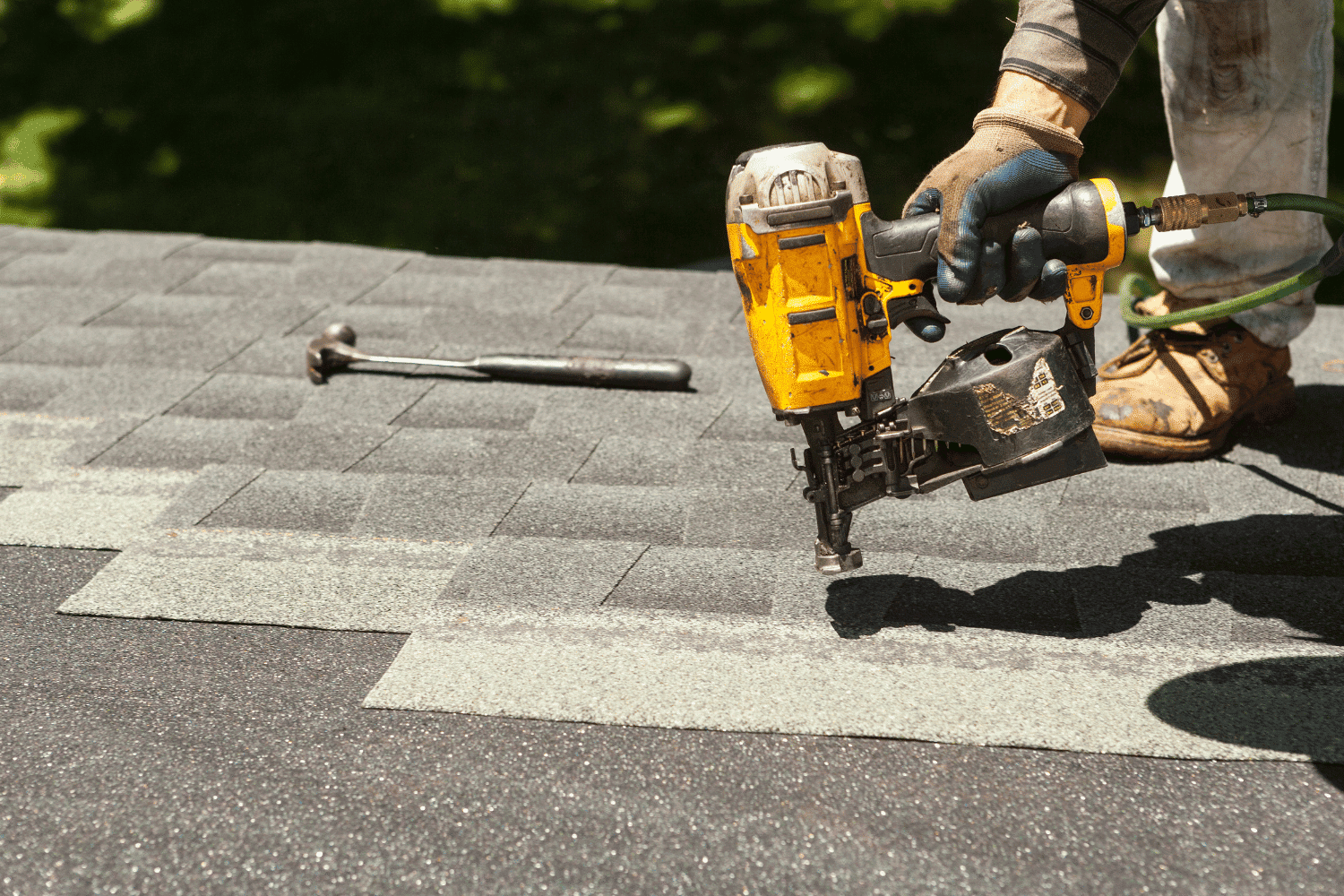
Deciding between a DIY roof replacement and hiring professionals is a significant choice that depends on various factors. While DIY projects can save homeowners money, they come with substantial risks and potential long-term expenses due to improper installation. For minor repairs, homeowners might tackle the tasks themselves but should always approach with caution and know when to call in professionals.
Professional roofers undergo extensive training and possess the skills needed for effective roof installation and repairs, making them a safer option for most homeowners. Attempting a roof replacement by yourself is generally not recommended due to safety concerns and the complexity of the job. While homeowners can save approximately $5,470 on average by doing the roof replacement themselves, the risks and potential for mistakes often outweigh the roof replacement cost savings.
It’s crucial to have ample experience with power tools and ladders to safely perform a DIY roof replacement. Therefore, weighing the pros and cons of each option can help homeowners make an informed decision that best suits their needs and capabilities.
Additional Costs to Consider
When planning for a roof replacement, it’s important to consider potential additional costs that can impact your budget. Local building permits and inspections may add costs and time to roofing projects. Cleanup and disposal fees for roofing projects can start around $60 for smaller jobs, but if homeowners remove the roof themselves, disposal fees could reach up to $600 for junk removal.
Other potential additional fees associated with roof replacement can include permit fees, roof inspections, expedited service premiums, and damages to existing structures. Being aware of these costs upfront can help you budget more accurately and avoid unexpected expenses.
Financing Options for Roof Replacement
Financing a roof replacement can be a significant concern for many homeowners. Fortunately, many roofing companies offer financing options that allow homeowners to pay for new roofs over a period of time. One common option is a home equity loan, which allows homeowners to borrow against their home’s value, often at lower interest rates than other financing methods.
A home equity line of credit (HELOC) provides a revolving line of credit based on home equity, which can be accessed as needed. Another option is cash-out refinancing, which replaces an existing mortgage with a larger loan, allowing the homeowner to use the extra funds for roof replacement. FHA Title 1 loans and FHA 203(k) loans are designed for home improvements, helping those without sufficient equity to finance roof replacements.
Personal loans for roof replacement can be unsecured, meaning they do not require collateral from the homeowner. However, using credit cards for roof replacement can be risky due to high interest rates, making it a less favorable option. Homeowners insurance can sometimes cover roof replacement costs, but this typically relies on the specifics of the insurance policy.
Maintenance Tips for a New Roof
Maintaining your new roof is essential to ensure its longevity and performance. Regular inspections are a key aspect of roof maintenance; it’s advisable to inspect the roof each season to identify any signs of wear or damage. Annual cleaning for moss, lichen, and algae can prevent extensive roof damage and prolong the life of your shingles. Additionally, maintaining gutters to ensure they effectively divert water and debris away from the roof is crucial.
Regularly removing leaves and debris from the roof can prevent damage and growth issues. Inspect and replace caulk around flashings annually to prevent leaks, and trim overhanging branches to avoid potential damage from falling limbs.
Consulting roofing professionals for maintenance and repairs ensures quality care and helps catch potential issues early, ensuring your roof remains in top condition.
Summary
In summary, reroofing a house is a comprehensive process that involves several critical steps and considerations. Understanding the factors that influence roof replacement costs, choosing the right materials, and deciding between DIY and professional installation are all crucial to a successful roofing project. By following the detailed steps outlined in this guide, from assessing the existing roof to installing flashing and vents, you can ensure a durable and long-lasting roof.
Proper maintenance is essential to extend the life of your new roof and protect your investment. Regular inspections, cleaning, and professional care can help prevent issues and keep your roof in excellent condition. Whether you opt for a DIY approach or hire professional roofers, being informed and prepared will help you achieve the best results. Remember, a well-maintained roof not only enhances your home’s curb appeal but also provides critical protection against the elements.
Frequently Asked Questions
What additional services does Rapid Roofing offer besides roofing?
Rapid Roofing provides additional services including gutters, siding, and skylights, ensuring a comprehensive solution for your exterior needs.
Why are asphalt shingles a popular choice for roofing?
Asphalt shingles are a popular choice for roofing due to their durability, affordability, and wide variety of styles and colors, which offer both protection and aesthetic appeal.
What are common health and safety hazards in roofing?
Common health and safety hazards in roofing include leaks that can cause mold growth, structural weaknesses, and the risk of injury from damaged materials. Addressing these hazards is crucial to ensure the safety of both workers and occupants.
How can I find roofers near me?
You can find reliable roofers near you by checking local listings and reviews or visiting dedicated roofing websites. These resources will help you identify trustworthy professionals for your roofing needs.
Does Rapid Roofing offer financing assistance?
Yes, Rapid Roofing offers financing assistance with flexible programs, including options through Michigan Saves.
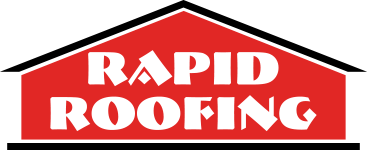

 Residential Roofing
Residential Roofing Storm Damage
Storm Damage Multi-Family Homes
Multi-Family Homes
